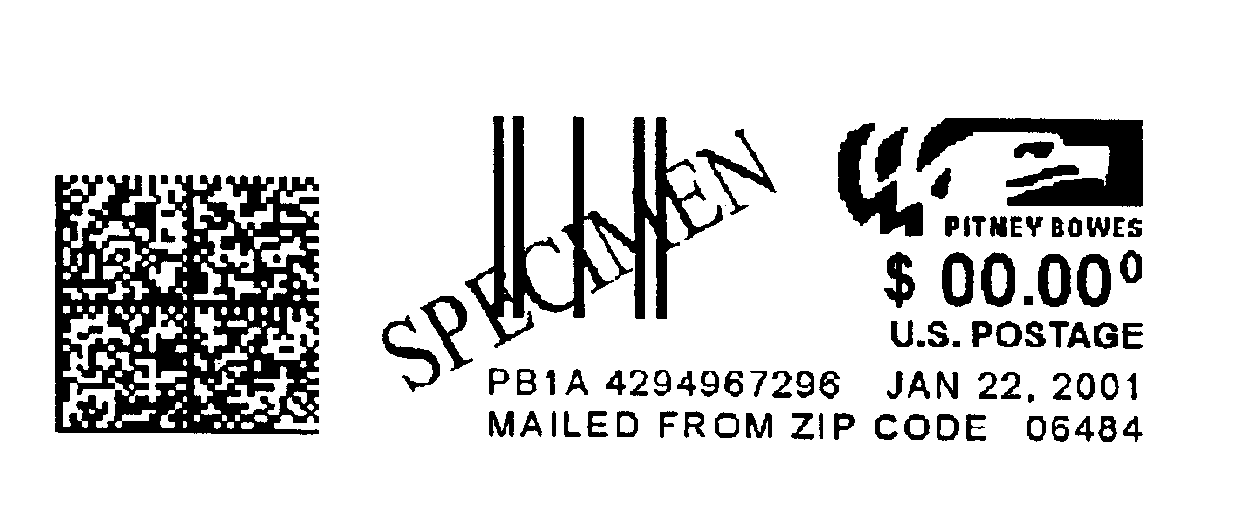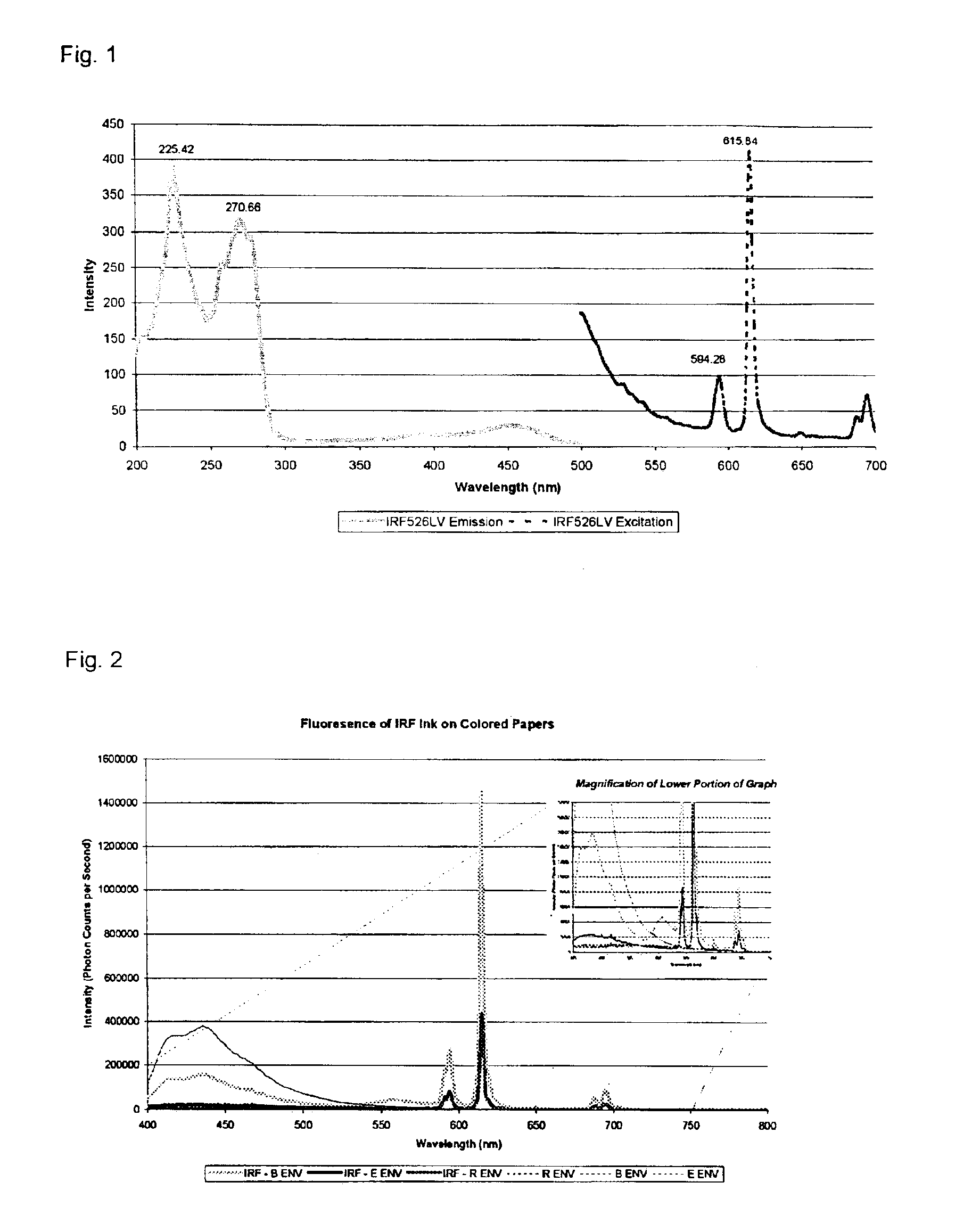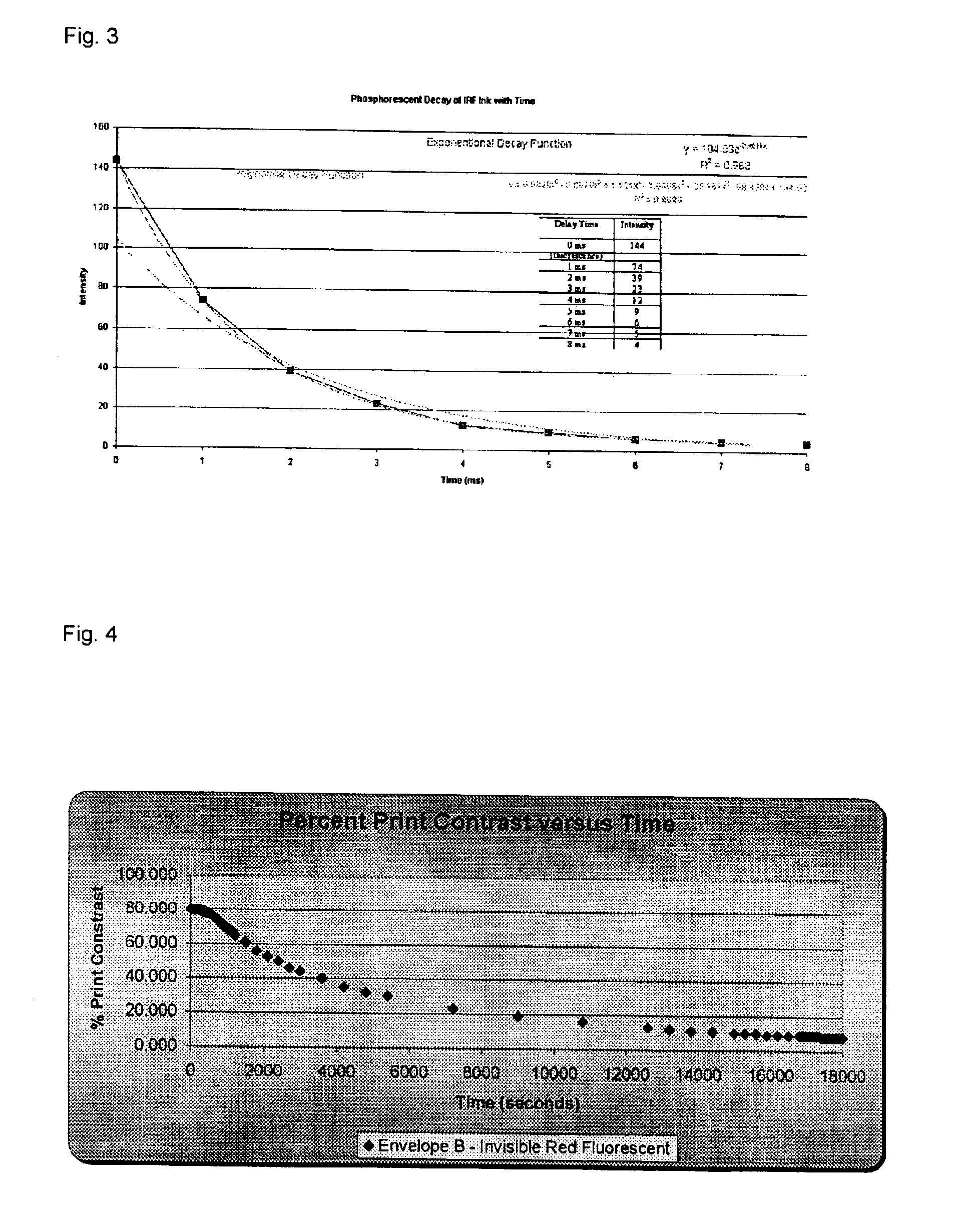Invisible ink jet inks
a technology of invisible inks and ink jets, applied in the direction of inks, electrostatic spraying apparatus, bleaching apparatus, etc., can solve the problems of less than refined printing of 2-d bar code ibi images with invisible inks, unsatisfactory use of reflectance, etc., and achieve the effect of less variation for negative contras
- Summary
- Abstract
- Description
- Claims
- Application Information
AI Technical Summary
Benefits of technology
Problems solved by technology
Method used
Image
Examples
example 1
[0061]This example illustrates an invisible red fluorescent ink which was formulated by using the following formulation:[0062]1.10% Lumilux Red CD 380 fluorophore[0063]1.98% PVP (Kollidone K-12)[0064]6.28% BTG (triethylene glycol mono butyl ether)[0065]9.9% 2-Pyrrolidone[0066]24.64% Polyethylene Glycol (M.W. 200)[0067]61.16% Distilled H2O
The ingredients are mixed by simply agitating a mixture for a time suitable to achieve a colorless solution.
[0068]The ink exhibits the following properties:[0069]Viscosity=4.1 cp[0070]Surface Tension=40.3 dynes / cm
example 2
[0071]This example illustrates formulation of a low-viscosity invisible red fluorescent ink following the procedure of Example 1 from the following components:[0072]1.10% Lumilux Red CD 380 fluorophore[0073]1.60% PVP (Kollidone K-12)[0074]6.00% BTG[0075]6.00% 2-Pyrrolidone[0076]8.00% Polyethylene Glycol (M.W. 200)[0077]77.3% Distilled H2O
[0078]The ink exhibits the following properties:[0079]Viscosity=2.2 cp[0080]Surface Tension=39.0 dynes / cm
example 3
[0081]This example illustrates formulation of a low-viscosity invisible red fluorescent ink following the procedure of Example 1 from the following components:[0082]1.10% Lumilux Red CD 380 fluorophore[0083]1.98% PVP (Kollidone K-12)[0084]6.28% BTG[0085]9.9% 2-Pyrrolidone[0086]24.64% Polyethylene Glycol (M.W. 200)[0087]56.1% Distilled H2O
[0088]The ink exhibits the following properties:[0089]Viscosity=4.1 cp and Surface Tension=46.2 dynes / cm
PUM
| Property | Measurement | Unit |
|---|---|---|
| surface tension | aaaaa | aaaaa |
| viscosity | aaaaa | aaaaa |
| atomic number | aaaaa | aaaaa |
Abstract
Description
Claims
Application Information
 Login to View More
Login to View More - R&D
- Intellectual Property
- Life Sciences
- Materials
- Tech Scout
- Unparalleled Data Quality
- Higher Quality Content
- 60% Fewer Hallucinations
Browse by: Latest US Patents, China's latest patents, Technical Efficacy Thesaurus, Application Domain, Technology Topic, Popular Technical Reports.
© 2025 PatSnap. All rights reserved.Legal|Privacy policy|Modern Slavery Act Transparency Statement|Sitemap|About US| Contact US: help@patsnap.com



